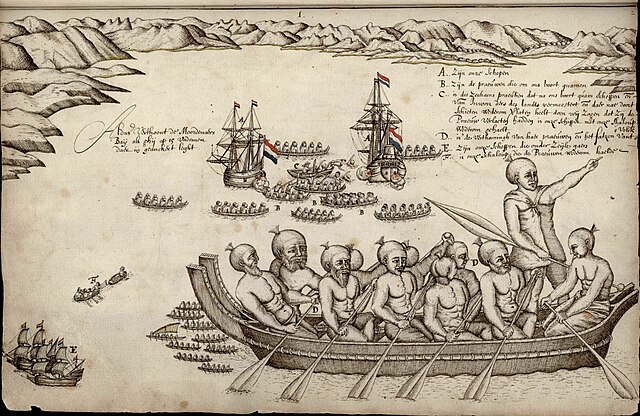Uenuku is an atua of rainbows and a prominent ancestor in Māori tradition. Māori believed that the rainbow's appearance represented an omen, and one kind of yearly offering made to him was that of the young leaves of the first planted kūmara crop. He was a tribal war god invoked before battles, particularly in the northern half of the country. It was said that if a taua appeared under the arch of the rainbow, it would be defeated in battle, and likewise, if they appeared to either side of the rainbow, they would be victorious. The Māori identified hawk feathers and a particular star called Uenuku as being sacred to him.
Rainbow in the evening sun at The Remarkables. Uenuku is a famous atua of the rainbow.
Two rainbows. Kahukura is another atua of the rainbow. Tūāwhiorangi is his wife, represented by the lower bow.
Māori mythology and Māori traditions are two major categories into which the remote oral history of New Zealand's Māori may be divided. Māori myths concern tales of supernatural events relating to the origins of what was the observable world for the pre-European Māori, often involving gods and demigods. Māori tradition concerns more folkloric legends often involving historical or semi-historical forebears. Both categories merge in whakapapa to explain the overall origin of the Māori and their connections to the world which they lived in.
Six major departmental atua represented by wooden godsticks: left to right, Tūmatauenga, Tāwhirimātea, Tāne Mahuta, Tangaroa, Rongo-mā-Tāne, and Haumia-tiketike.
Detail from a ridgepole (tāhūhū) in a Ngāti Awa wharenui. Believed to represent one of two ancestors: Tūwharetoa or Kahungunu.
First European impression of (Ngāti Tūmatakōkiri) Māori, at Murderers' Bay, 1642.





